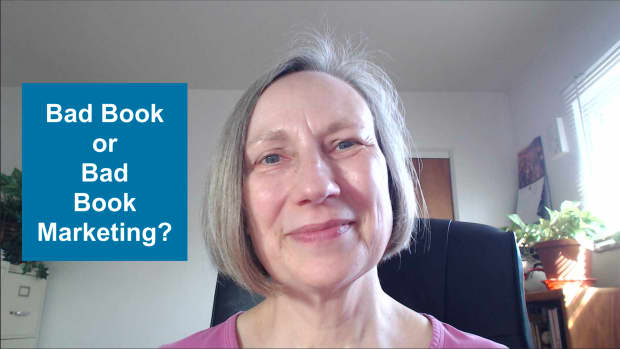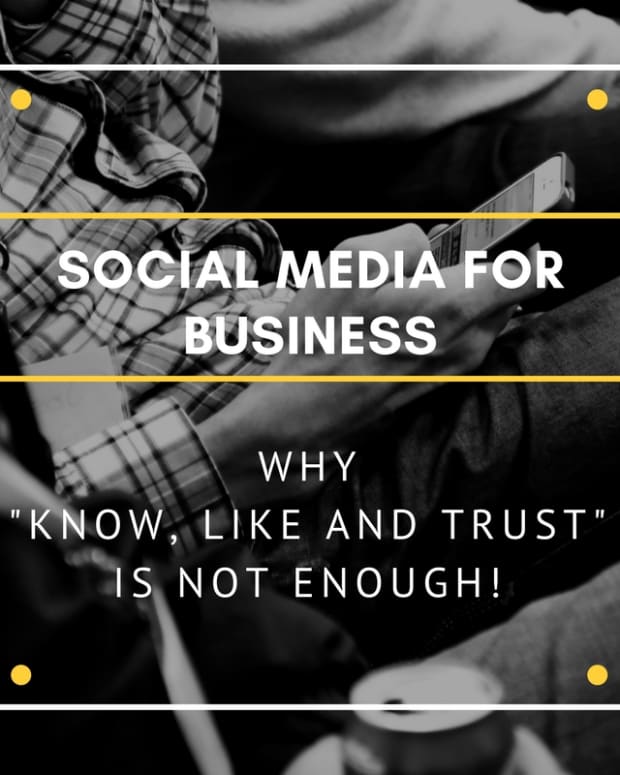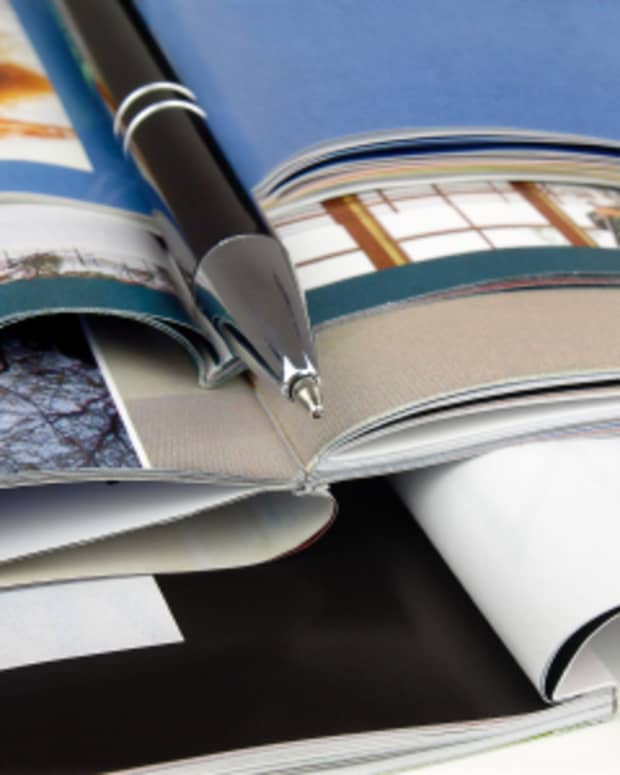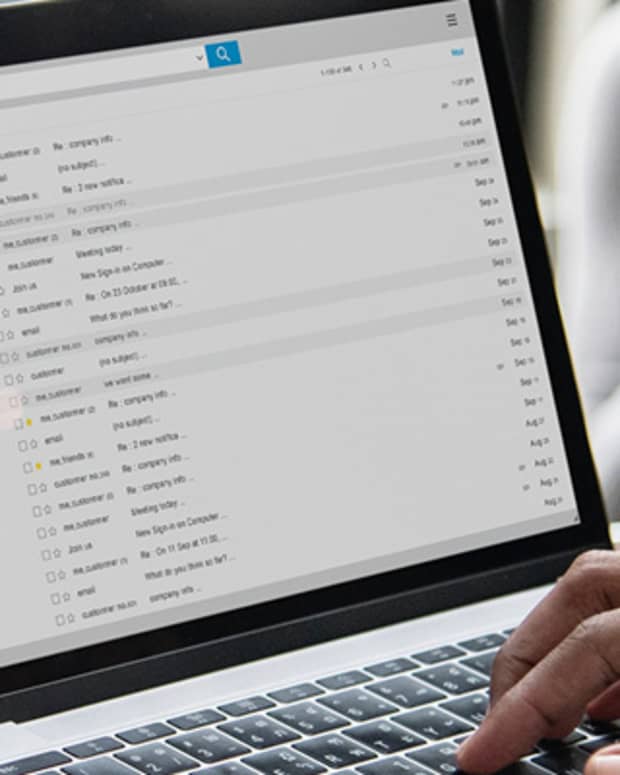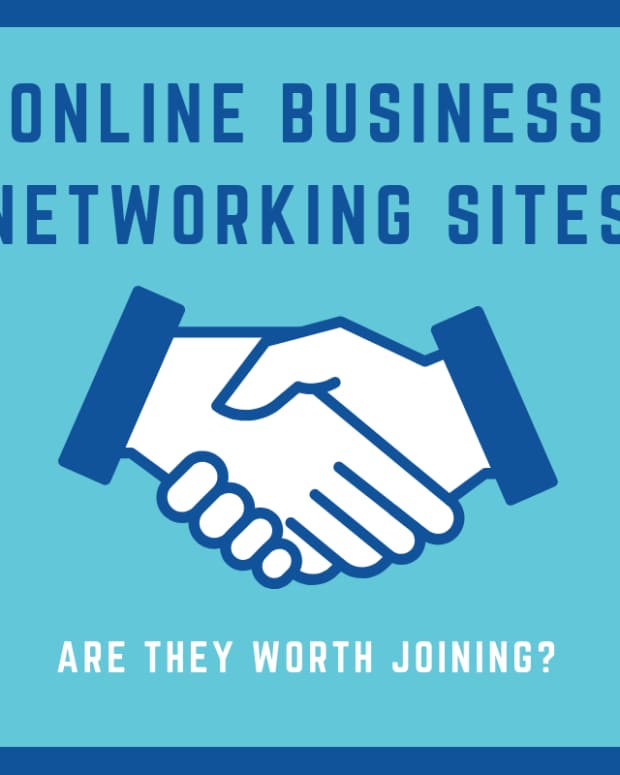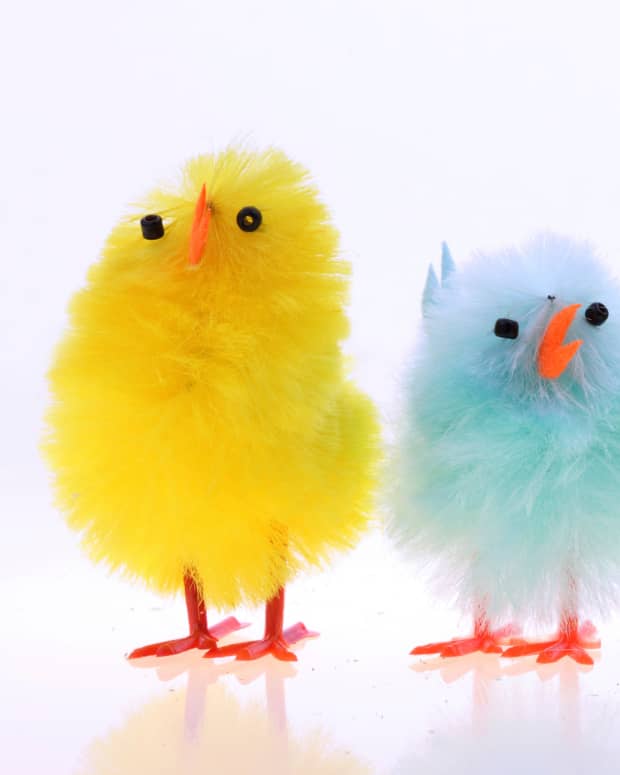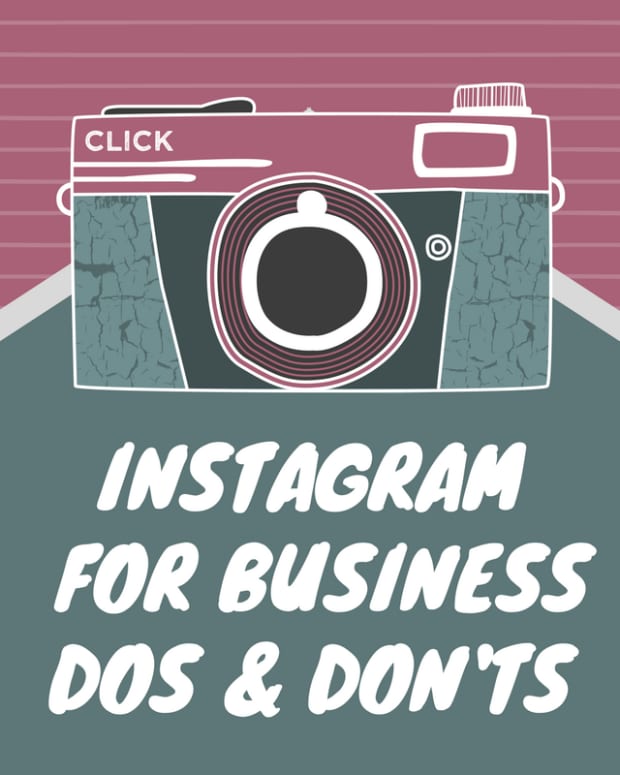How to Write a Press Release for a Small Business
Heidi Thorne is an author and business speaker with over 25 years of experience in sales, marketing, advertising, and public relations.
How to Get Media to Cover Your Story
If your celebrity status or influence with the public is very high (think top government officials and movie stars), the media may well seek you out to interview you and include your story in their broadcasts or publications. But let's be honest, most marketers, especially small businesses, don't warrant (or want!) that kind of attention. So, no, it is unlikely that media editors or staff reporters will seek you out and write a story on your business or happenings.
However, businesses of all sizes have one cost-effective marketing tool to help them get media coverage: The press release.
What Is a Press Release?
A press release is a document that is sent to members of the press—more commonly known asmediathese days to include newspapers, television, radio, Internet news sites, etc.—to alert them of news or other information that may be of interest to their readers, viewers or listeners. The media outlet editors then decide whether to include the news item in their publication or broadcast . . . or ignore it. If accepted for inclusion, the editors may publish the press release as submitted by the sender, may edit to meet their editorial guidelines, or may even assign it to their staff of writers and reporters to cover or expand on the story.
When a press release, or the content of the release, is accepted and included in a publication or broadcast, it is a win for the person or company who sent the release. This is often consideredearned mediasince, other than the cost of preparing and sending the release, the sender incurs no cost to receiveinkorpresswhich means the privilege of being published or broadcast by the media channel. By contrast, advertising is consideredpaid mediasince the sender (advertiser) is paying to have their information (ad or story) included.
What Should a Press Release be About?
As a small business marketer, you may feel that your news wouldn't even be worthy of an editor's attention. That may be true . . . or maybe not. Sometimes it depends on how the editor feels that day.
Just remember that your press release should be "news," meaning that it is reporting that something has happened or is going to happen, or you are responding to something that has happened, for you and your business. As well, it must be factual and not infringe on copyrights or trademarks, not be libelous or defamatory, not invade anyone's privacy and definitely not breach any confidentiality. Educate yourself on media liability issues and seek legal guidance on what is appropriate to publish for you and your business.
Is It a Press Release or a News Article?
Have how-to information, tips, or other information that would be appreciated by a media channel's audience? While these items may often be formatted as a press release, they are not technically so. These would be considered articles or features. Review the various departments of a media's editorial staff to determine which people should receive features for consideration, as opposed to news.
The Inverted Pyramid Structure for Press Releases
To be worthy of review by busy media editors, press releases should follow a standard structure and format.
In terms of structure, a press release follows aninverted pyramidwriting formula, meaning that the most important information—the who, what, why, where, when and how—of the story should be as close to the beginning of the document as possible, ideally in the first paragraph. Then less important details follow.
为什么符合lowing this structure important? Editors often have to cut stories to fit the space or time available. Editors cut from the bottom up. So if your most important information was at the bottom, it's gone.
Always write your press release in the third person. Why? Because this is a story about you, not you telling your story.
— Heidi Thorne
How to Format a Press Release
There are a few conventions that should be followed when you write a press release. These elements should be included and typically appear in this order:
Notation of FOR IMMEDIATE RELEASE or HOLD FOR RELEASE UNTIL [DATE]
This tells the editor, writer or reporter when it's okay to publish what you've sent. Usually, this is positioned at the left margin.
Headline
So critical! This is one phrase that sums up your entire news story. Remember that most people scan headlines and many do not actually read the entire story. Make it relevant to your audience so that they might at least be enticed to read the all-important first paragraph. Your headline has to appeal to editors, too. They understand the wants and needs of their readers, listeners, and viewers. So if you can demonstrate your understanding of the target audience, you have a better chance of being considered for publication.
The headline is typically centered on the page or screen. Try to keep the headline to as few words as possible. Learn to use Twitter to write good headlines. Since you only have 140 characters to grab someone's attention, it's a good training ground!
Sub-Headline (Optional)
If the headline can't fully tell your story, a sub-headline might be helpful. However, seriously consider whether rewriting your headline might have more impact. Like the headline, the sub-headline is centered on the page or screen.
Word to the wise: As an editor, sub-headlines used to drive me nuts because they looked awkward in our particular column layout scheme. So I usually deleted them.
Location and Story Date
This should be self-explanatory. It is positioned at the left margin or, as I've sometimes seen, at the beginning of the first paragraph.
Read More From Toughnickel
Body
Tell your story in the inverted pyramid structure noted above. Always write your press release in the third person. Why? Because this is a story about you, not you telling your story. So avoid "I" and "we" when talking about your story, unless it's included in a quote. Example:"We're proud to announce this new innovation," said Mr. Small Business.Keep it short and to the point, limiting the total story text to around 500 words or less is a good target.
About Information (Optional)
我经常看到新闻,总结the story with an about paragraph which tells about the organization sending the release. Editors may include it (which is a win for the sender). But often it is cut because of space limitations and it can be seen as overly promotional. The value in including it is that if the editor is unfamiliar with the sender (as may be the case with many small businesses), it can help the editor verify the sender's credibility. As with the body of the document, this is written in the third person and is included in the total word count for the release.
Contact Information
Editors, writers, and reporters may want to clarify information prior to publishing your release. So include the best way to reach you (phone, email, etc.) and include your website. But don't be surprised if no one contacts you and—surprise!—you see your story appear. Beware that when you send a press release, you're telling the media it's okay to publish it and that it could go public! Be careful that what you write is what you'd want to hear on the evening news.
Notation of ### or END
This tells the media that there is no additional information to consider and it is placed at the bottom of the release. Some people also include the release's word count at the end (optional). These notations were more of an issue in the old days when paper press releases were the norm and editors needed to know if there was more to the story on multiple pages. But it's still worth doing no matter what.
As a side note, if your physical, printed release does spill over into multiple pages, putting a notation of MORE at the end of the page alerts the editorial staff that there's more information to consider before the END.
Some additional miscellaneous tips:
- No funky fonts or fancy formatting.The publication will format your information for publication as they see fit. Using standard fonts, such as Times New Roman or Helvetica, makes your release easier for editors to read and helps brand you as a professional.
- Have a media kit.In addition to your press release, having a media kit available is recommended. These days, a digital media kit on a website is popular since it's low cost and it's easy for media to access it.
Beware that when you send a press release, you're telling the media it's okay to publish it and that it could go public! Be careful that what you write is what you'd want to hear on the evening news.
— Heidi Thorne
Where Do You Send a Press Release?
Larger publications often have several editors, each one dedicated to a particularbeat, meaning that they cover a specific segment of the industry, a geographical location, or type of story. Again, refer to the media outlet's website to see who would be your ideal editor candidate and how they wish to be contacted.
关键是,你通常会将其发送给an editor. For smaller media, there may be one person who is the publisher, editor, reporter, and writer! Check the media outlet's website to determine the proper contact.
Alternatively, some people prefer to distribute their press releases with the help of press release and public relations services. An example would be PRWeb. These services can broadcast your release to hundreds, even thousands, of media outlets. That can be effective, but it can also be expensive since these services usually charge a fee either per press release or a monthly subscription fee. Also consider that if your story has local interest only, wide distribution can be counterproductive and expensive.
Free press release distribution services can also be considered, but they may not have the reach that paid services do, and may send your release to irrelevant media. Carefully consider each service's capabilities and costs before going this route.
It's worthwhile to develop relationships with key media outlets for your industry and audience. Then when an editor or reporter receives your release, they may be more willing to consider your story for inclusion. Also, distributing your release to the media isn't the only way to get the word out on your story. Sending your press release to customers and broadcasting through social media can be very effective and cost-effective, too.
Can You Email a Press Release?
Email press releases are very common, even preferred, these days. However, every media outlet is different. Check the channel or publication website for submission instructions.
How Should You Follow Up with Editors About Your Press Release?
When I was doing public relations for the trade show industry, I remember calling editors and driving them crazy with follow-up calls. Hey, I was just doing my job. But then when I was on the other end as the editor, getting the follow-up calls used to drive me crazy!
除非你已经建立了一个与一个editor or reporter that would welcome your call, tread carefully when following up on a press release that you sent. The one thing you don't want to establish is a reputation for being a pest. Always use proper business etiquette when following up by phone.
If they haven't picked up your release for publication or contacted you for more information, it's a sign that you don't have anything of interest to them . . . at least not today. Don't get discouraged. Keep sending interesting and relevant stories to those media outlets that are of most value to you and your audience. They don't call it "earned media" for nothing!
From the Editor's Desk: How I Decided What Press Releases to Run
As a trade newspaper editor for over 15 years, here are some of the questions that would run through my mind when I considered piles of press releases to use:
- Does it have local significance? Since the publication I edited was local, the local news came first.
- Is there a deadline or significant announcement date that the audience should know?
- Is the news relevantandsignificant for the audience or industry the publication serves?
- Is this truly news? Or should it be considered for features or filler material?
- Is the source credible?
This article is accurate and true to the best of the author’s knowledge. Content is for informational or entertainment purposes only and does not substitute for personal counsel or professional advice in business, financial, legal, or technical matters.
© 2016 Heidi Thorne
Comments
Heidi Thorne (author)from Chicago Area on November 28, 2016:
Hi MsDora! Glad you found it helpful. Have a wonderful post-Thanksgiving week!
Dora Weithersfrom The Caribbean on November 28, 2016:
Thanks for the lesson on writing a press release. Informative and helpful.
Heidi Thorne (author)from Chicago Area on November 28, 2016:
Thanks, Larry, for stopping by and commenting! Have a great week!
Larry Rankinfrom Oklahoma on November 28, 2016:
Very helpful.
Heidi Thorne (author)from Chicago Area on November 28, 2016:
Billybuc, I think many writers have the same scenario! We'll write for our clients, but forget about using PR ourselves. Actually, what I do is post a release on a "News" feed on my website and then share on social media and my email newsletter as appropriate. Some of my news I just don't consider significant enough to distribute to the major PR distribution sites. Again, it depends on what you want to accomplish. Something to think about for your next book. In the meantime, thanks for stopping by and have a great week!
Bill Hollandfrom Olympia, WA on November 28, 2016:
I've written many for customers but never for myself. Hmmm! Maybe I need to shift into a new gear? :)
Heidi Thorne (author)from Chicago Area on November 27, 2016:
Hi purl3agony! So true that being able to create a press release--and understand how to use one!--is a valuable skill to have no matter what the business. I am so thankful for your support and sharing over the past year. Means a lot to me. Hope you're enjoying your Thanksgiving holiday weekend! Cheers!
Heidi Thorne (author)from Chicago Area on November 27, 2016:
Hi Flourish! Love the suggestion about adding a quality photo with proper credits and, I would add, caption. I always appreciated that as an editor. You're so right about ready-to-print. Those were the filler pieces I'd tell our layout folks to include if they ended up with some space to fill. Thanks for adding your experience and insight to the conversation! Hope you're having a delightful Thanksgiving weekend!
Donna Herronfrom USA on November 27, 2016:
Thanks so much for posting this Heidi. Writing press releases can be such an important skill for any business (large or small) and non-profit organization. I'm sharing this with everyone I know because I've worked so many places where people didn't know how to write a good press release and (even worse) didn't understand how important they can be. And I love FlourishAnyway's comments about having a press release "ready to print"! Thanks again!
FlourishAnywayfrom USA on November 27, 2016:
Terrific tips on getting free publicity. It's not hard at all, and if you can include a quality photo with proper credits that may be helpful as well. Having worked the press side many years ago, editors sometimes looked for filler and it's often the amount of space and ready-to-print aspect of the article that controls whether to include it or not.




